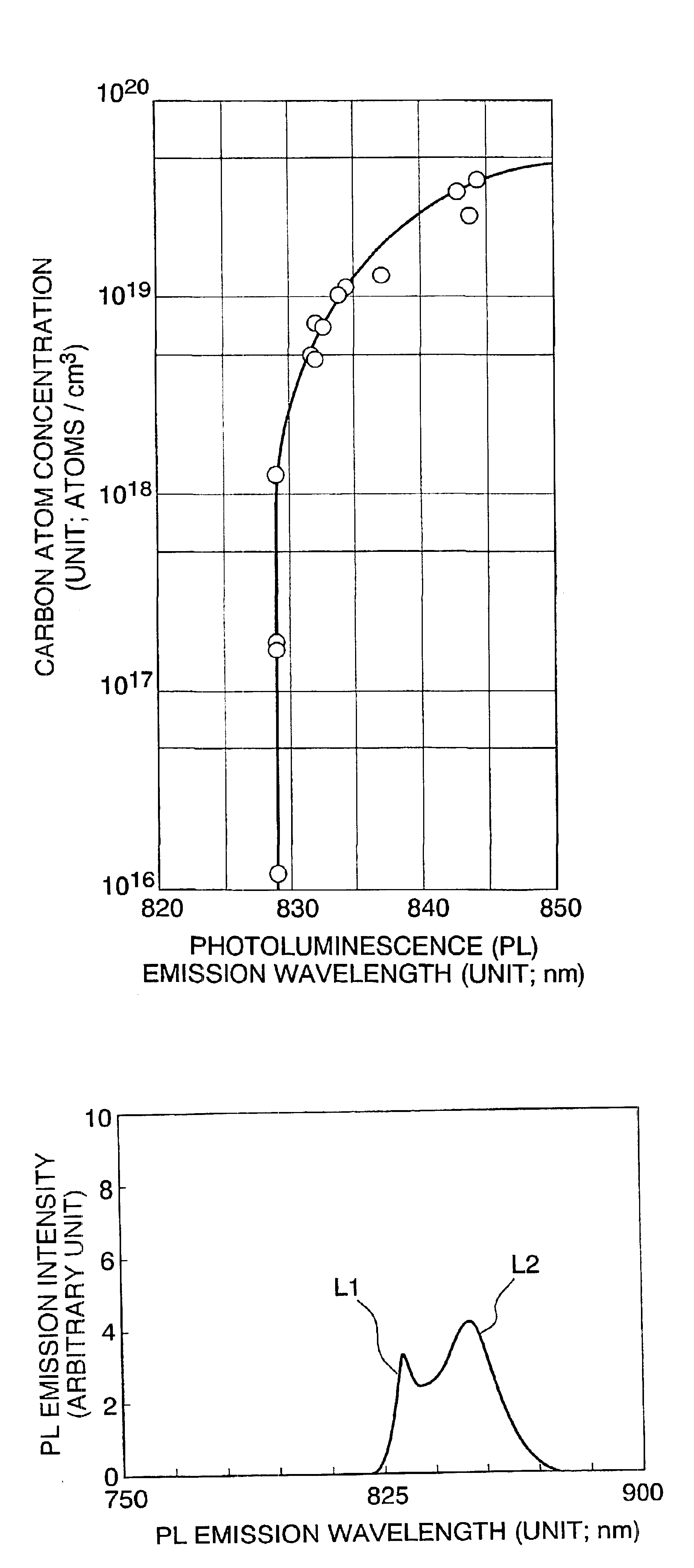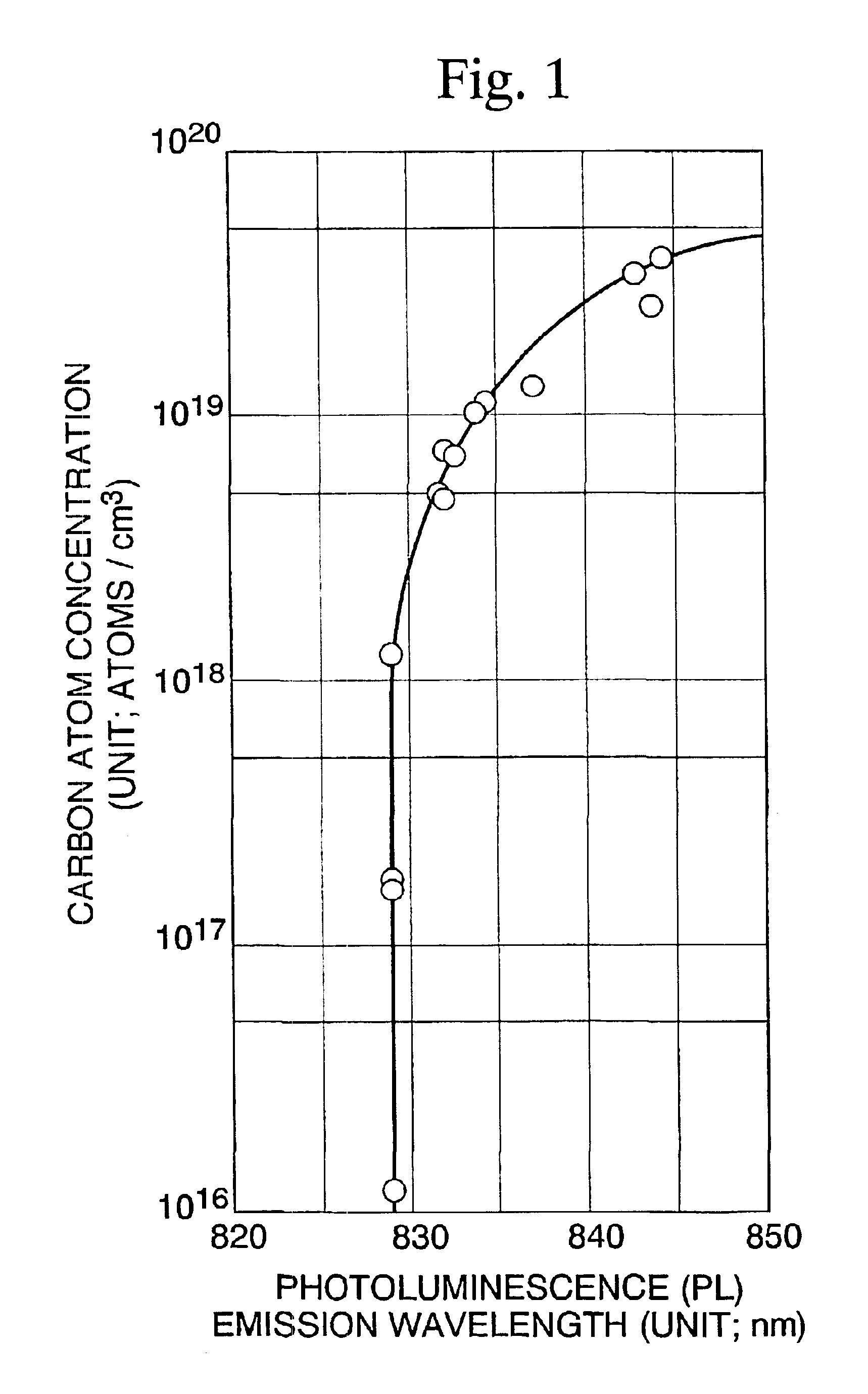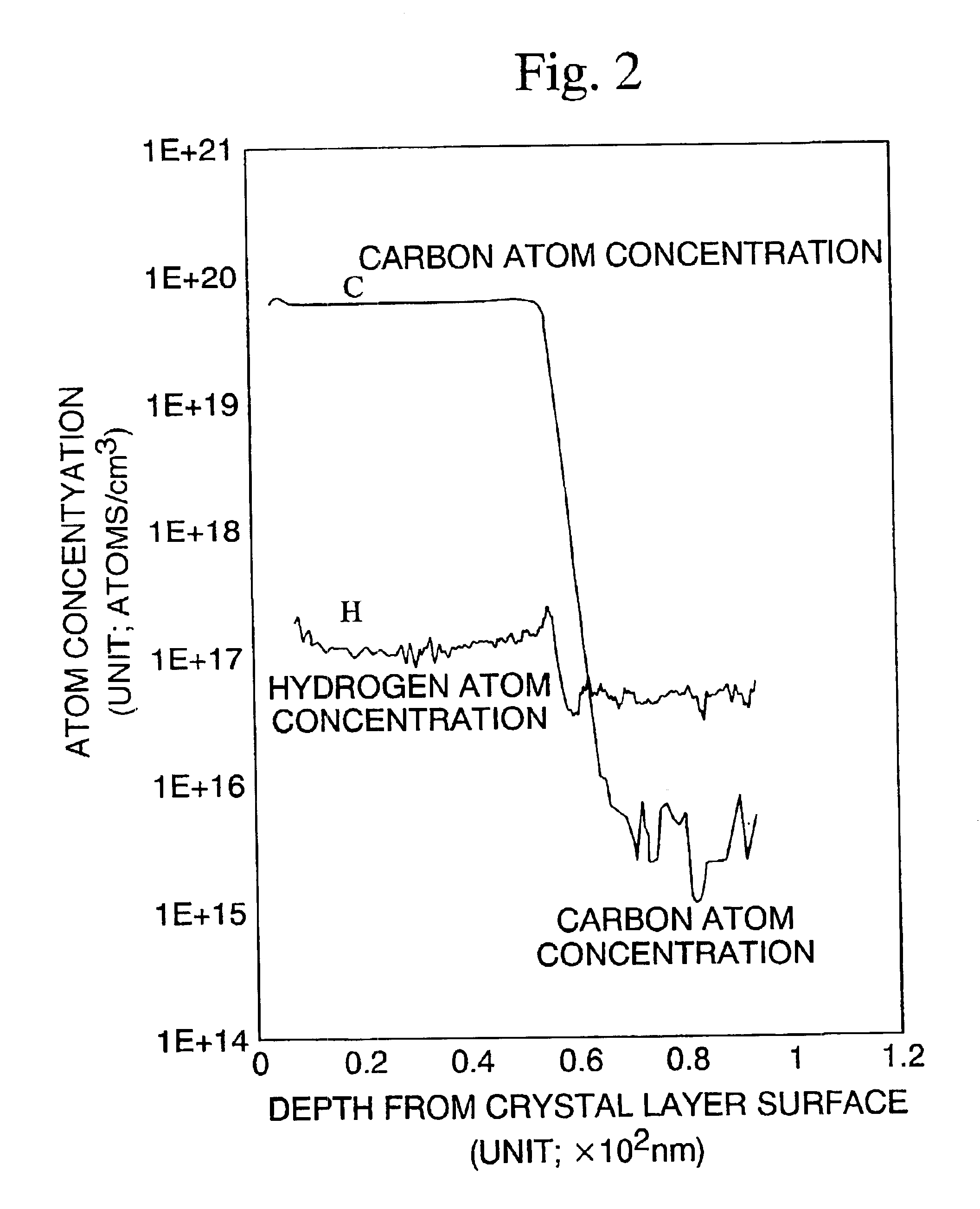Compound semiconductor multilayer structure and bipolar transistor using the same
- Summary
- Abstract
- Description
- Claims
- Application Information
AI Technical Summary
Problems solved by technology
Method used
Image
Examples
example 1
[0065]The present invention will next be described in detail with reference to the case in which a GaxIn1-xP-system HBT is fabricated. FIG. 4 is a schematic cross-sectional view of an HBT 100 according to the present invention.
[0066]In an epitaxial multilayer structure for producing the HBT 100, a substrate 101 was formed of an undoped semi-insulating (100) 2° off GaAs single crystal. The GaAs single crystal serving as the substrate had a specific resistance at room temperature of approximately 2×108 Φ·cm. On the upper surface of the substrate 101, which had a diameter of approximately 100 mm, was deposited a superlattice structure of an AlcGa1-cAs / GaAs system serving as a buffer layer 102. The superlattice structure was formed of an undoped Al0.3Ga0.7As layer 102a having an aluminum compositional proportion (=c) of 0.30, and an undoped p-type GaAs layer 102b. The undoped Al0.3Ga0.7As layer 102a had a carrier concentration of less than 5×1013 cm−3 and a thickness of 45 nm, while the...
example 2
[0083]In example 2, the present invention will be described in detail with reference to the case in which a GaInP-system HBT containing a composition-graded group III-V compound semiconductor layer serving as an emitter layer was fabricated. The formation of each layer was carried out at the same growth pressure of 1.3×104 Pa and a same growth temperature of 640° C., except for forming the p-type carbon-containing GaAs layer.
[0084]After completion of the growth to form the p-type base layer 104, the growth system was maintained at 640° C. without carrying out the subsequent growth prior to forming the emitter layer 105 identical with that of Example 1. During the pause, the flow of hydrogen (H2), which serves as a carrier gas in the MOCVD reaction system during vapor growth, was maintained. After completion of intermission for precisely five minutes, a Si-doped n-type GaxIn1-xP (0≦x≦1) emitter layer 105 in which gallium composition was graded (carrier concentration=4×1017 cm−3 and a...
PUM
 Login to View More
Login to View More Abstract
Description
Claims
Application Information
 Login to View More
Login to View More - R&D
- Intellectual Property
- Life Sciences
- Materials
- Tech Scout
- Unparalleled Data Quality
- Higher Quality Content
- 60% Fewer Hallucinations
Browse by: Latest US Patents, China's latest patents, Technical Efficacy Thesaurus, Application Domain, Technology Topic, Popular Technical Reports.
© 2025 PatSnap. All rights reserved.Legal|Privacy policy|Modern Slavery Act Transparency Statement|Sitemap|About US| Contact US: help@patsnap.com



